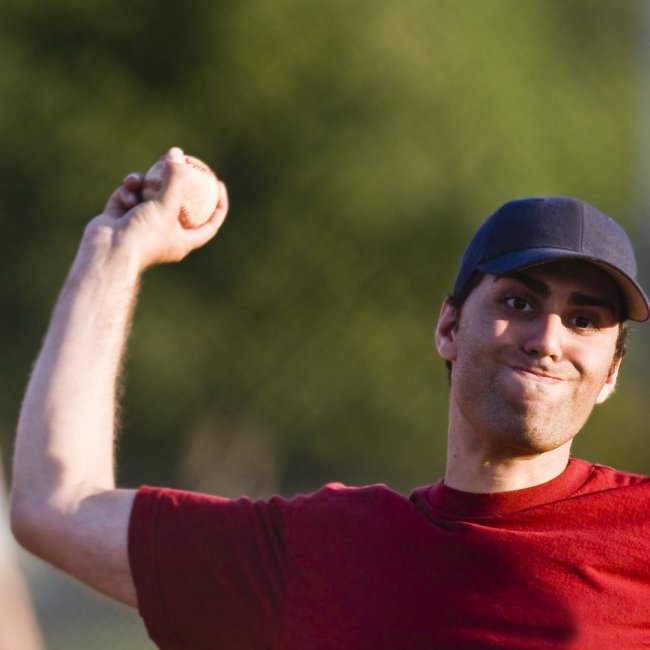


Physicians
Orthopedic Surgery
Shoulder & Knee
Sports Medicine
 Healthgrades
Healthgrades
Orthopedic Surgery
Shoulder & Knee
Sports Medicine
 Healthgrades
Healthgrades
Orthopedic Surgery
Shoulder & Knee
Sports Medicine
 Healthgrades
Healthgrades
Orthopedic Surgery
Shoulder & Knee
Sports Medicine
 Healthgrades
Healthgrades
Orthopedic Surgery
Shoulder & Knee
Sports Medicine
 Healthgrades
Healthgrades
Body parts
The rotator cuff is a group of four muscles that hold your shoulder joint in place and work to help you lift and rotate your upper arm.
When a rotator cuff “tears,” one or more of the tendons -- the strong fibrous tissue that attaches muscle to bone -- surrounding the humerus (upper part of the shoulder) detaches from the bone. A rotator cuff tear can be painful and affect your ability to move your arm and do daily activities, such as brushing your hair, reaching into a cupboard or lifting your bag.
People who do repetitive overhead exercise and those in certain occupations, such as house painters, can be more prone to a rotator cuff tear. It can happen over time from normal wear and tear of repetitive motion, such as swinging a tennis racquet or using a paint brush. If you get out on the tennis court in the spring after jogging on the treadmill at the gym all winter, for example, your rotator cuff may be prone to tearing because it’s not be up for the task. Lifting something too heavy, using your arms more than usual, such as moving or redecorating, falling on an outstretched arm and dislocating your shoulder are other common causes of a rotator cuff tear.
When you come into the Orthopedic Institute of New Jersey (OINJ), your shoulder surgeon will ask questions about your shoulder, when the pain started, if it came on suddenly after an injury or gradually over time, and what helps the pain get better or worse.
You’ll then undergo a physical exam. Your OINJ shoulder doctor will press on various parts of your shoulder and move your arm into several positions to identify maneuvers that reproduce your pain. Your doctor will also test your shoulder range of motion and assess how well you can move your arm yourself. You may also undergo X-ray to see if there’s an underlying cause, such as arthritis, bone calcifications, bone spurs or other injuries. A rotator cuff tear won’t show up on an X-ray, but it can help your shoulder doctor see these other potential causes of pain. Ultrasound can also provide rapid and diagnosis. Using sound waves, an ultrasound technician can move your arm to examine the tendon while watching the screen. Ultrasound can also be used to guide therapeutic injections. Ultimately, your doctor will likely send you for an MRI to best evaluate the rotator cuff tendons and determine is there is a complete or partial tear.
If you’re diagnosed with a rotator cuff tear, your OINJ shoulder doctor may recommend non-operative treatments first, such as resting the shoulder and starting physical therapy to strengthen the other muscles around your shoulder. Sling immobilization is usually avoided to minimize development of a frozen shoulder. A course of non-steroidal anti-inflammatory medication or corticosteroid injections to the area of the rotator cuff can be helpful to reduce inflammation and improve your ability to move the shoulder with less pain.
If you shoulder still hurts after trying non-operative treatment, surgery may be an option. Surgery is typically performed using a minimally invasive arthroscopic approach. The rotator cuff is visualized from the joint as well as the space above the joint to identify partial tears on either side. Deep partial tears and full thickness tears undergo surgical repair, while some partial thickness tears that are more shallow may be treated with cleaning of the frayed tendon without repair. Rotator cuff repair is performed using a combination of suture and suture anchors to bring the torn tendon edge back down to the humerus and stabilize it to promote healing. After surgery, patients are usually in a sling for 4 to 6 weeks to keep the shoulder immobilized and protect the rotator cuff repair. Physical therapy is required to regain shoulder motion and strength after the repair.